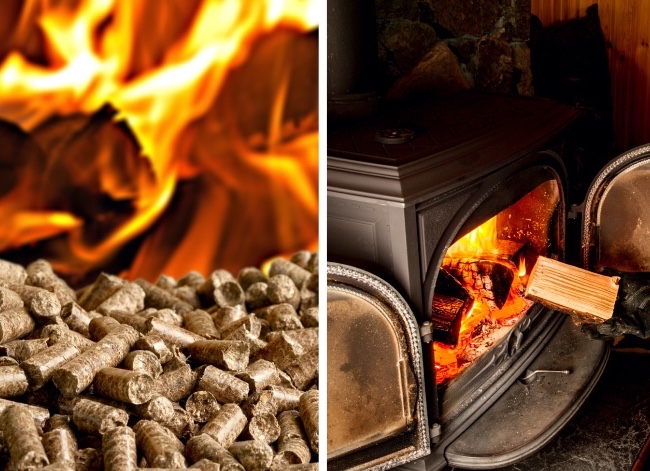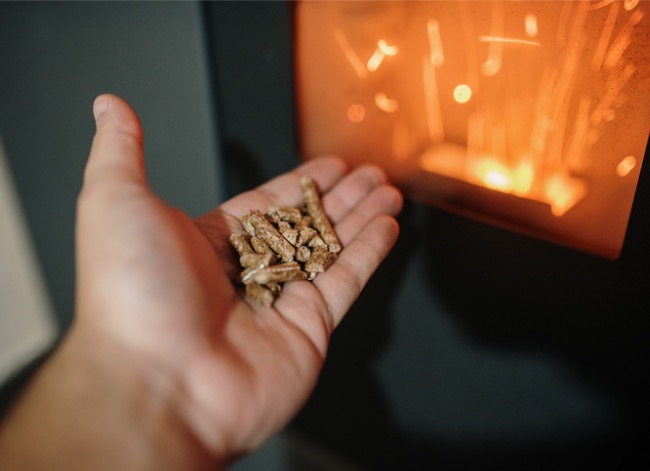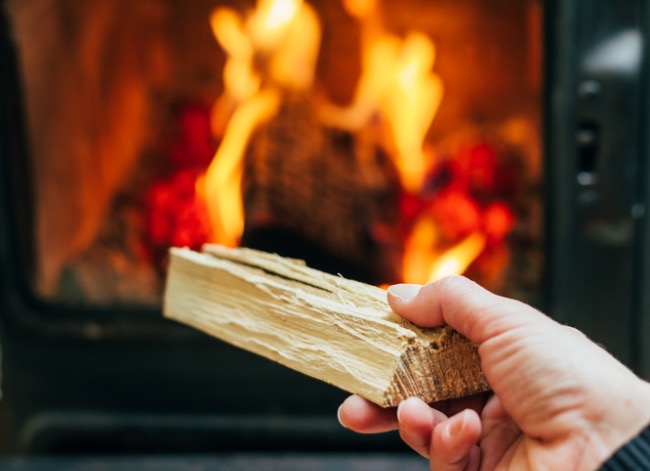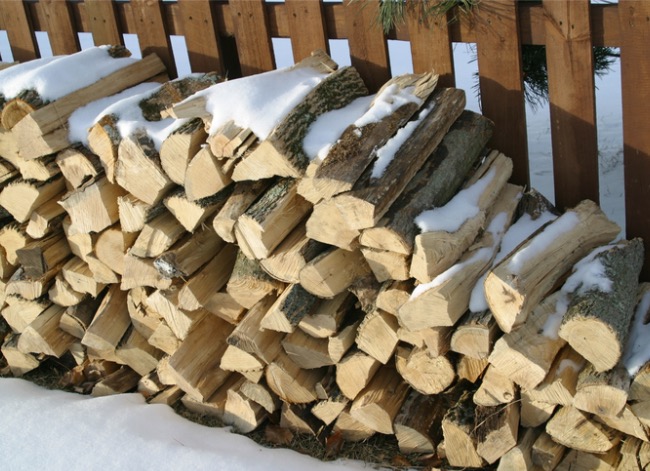

We may earn revenue from the products available on this page and participate in affiliate programs. Learn More ›
If you’re looking for the perfect solution to keep your home warm and toasty in the winter without spending an exorbitant amount on heating costs, investing in a pellet stove or wood burning stove may be the ideal solution. Both kinds of stoves rely on more traditional methods of heating by burning wood, either in the form of firewood or wooden pellets.
Choosing between a pellet stove vs. wood stove can be a difficult decision. Continue reading to learn how these stove types are similar, and some key differences that could help you decide which is best for your home.
Wood stoves burn seasoned firewood, whereas pellet stoves burn recycled wood waste pellets.
One of the main differences between wood burning stoves and pellet stoves is the type of fuel they require. Seasoned firewood is required to fuel a wood burning stove, and you’ll need wood pellets for a pellet stove. Firewood and wood pellets are both renewable resources. They present a more environmentally-friendly alternative to fossil fuels.
If you’re looking for that traditional crackling and glowing fibers of a fire, you may want to consider a wood burning stove. Pellet stoves, on the other hand, may be a better choice if you’re looking for something quieter. You will still be able to enjoy a bright flame with a pellet stove, but it will be a bit more subtle than the flame from a wood stove.
Related: The Best (and Worst) Types of Wood for Burning in the Fireplace
Pellet stoves emit heat more consistently than traditional wood burning stoves.
The heat produced by pellet and wood burning stoves is also a little different. While the exact heating output of a pellet stove can vary based on the quality, design, and type of pellets you choose, this stove type is able to maintain a more consistent heat. Many even feature a programmable thermostat that will let you set the heat output to maintain your desired temperature.
However, wood stoves offer greater heating power than pellet stoves. Whereas most pellet stoves have a BTU rating under 50,000, there are wood burning stoves with BTU ratings above 100,000. Bear in mind, however, that the number of logs and their moisture content will also play a role in how much that heat a wood stove will be able to produce.

Both wood burning and pellet stoves are available as inserts or freestanding models.
Both pellet stoves and wood stoves are available as a freestanding model or as an insert. Choosing a wood burning or pellet stove insert may be an appealing choice for homes with a traditional fireplace that isn’t used too often. These insert pellet stove and wood burning stove models can be hooked up in the existing fireplace location and vent through the home’s chimney.
Alternatively, you can also find freestanding pellet stoves and wood burning stoves. A freestanding model may be a better option for homes with no fireplace or owners who want more flexibility regarding the placement of the stove.
Pellet stoves produce less ash and emissions than traditional wood burning stoves.
Wood burning stoves and pellet stoves will need to be cleaned on a regular basis. Removing ash from the interior is important to keep the appliance clean and rust-free. However, the amount of ash produced by a pellet stove will be less than that produced by a wood burning stove, making clean up easier.
Additionally, pellet stoves release fewer emissions than their wood stove counterparts. While both wood and pellet stoves are more environmentally-friendly than heat sources relying on fossil fuels, pellet stoves still have a leg up on wood stoves in this regard.
Wood burning stoves feature fewer mechanical and electrical parts that can wear out or break.
Pellet stoves include numerous electrical components such as switches, fans, and motors. More electrical components introduce more opportunities for malfunctions and operational issues. Wood burning stoves, on the other hand, do not require electricity to operate and are designed with fewer parts that may malfunction or wear out.
Because of these differences, pellet stoves have a shorter lifespan and may require more repairs than wood stoves. The average lifespan of a wood burner is between 20 and 25 years compared to the 15- to 20-year average lifespan of a pellet stove.
Also, since pellet stoves require electricity to operate, they will stop working in the event of a power outage. Wood burning stoves will be able to continue to provide heat if the power goes out.

It’s often less expensive to install a pellet stove than a wood burning stove.
While some pellet stoves are more expensive than wood stoves, the price difference can be made up when installation costs are included. In order to install a wood stove, you typically need an insulated chimney system. The chimney system also must be tall enough that it extends past the peak of the roof.
Many pellet stoves don’t require such an intricate chimney system. In many cases, a direct-vent is sufficient for these models. Since having a direct-vent installed is much less expensive than an insulated chimney system, the overall cost of installing a pellet stove may be significantly cheaper.
Related: 16 Simple Tricks to Stay Seriously Warm This Winter
Fueling a wood burning stove often requires more work and storage space.
To keep a wood burning stove operating, you’ll need to have a good stash of firewood available. Firewood is bulky and will require a good deal of outdoor storage space. Additionally, you’ll need to exert a lot of time and effort splitting the firewood and bringing it indoors when fueling the stove.
Fueling a pellet stove is much simpler. You can purchase wood pellet packages, and you’ll simply need to open them up and load them into the stove. However, it is also important to note that wood pellets are often sold in 20- or 40-pound bags, which can make them heavy to carry.

